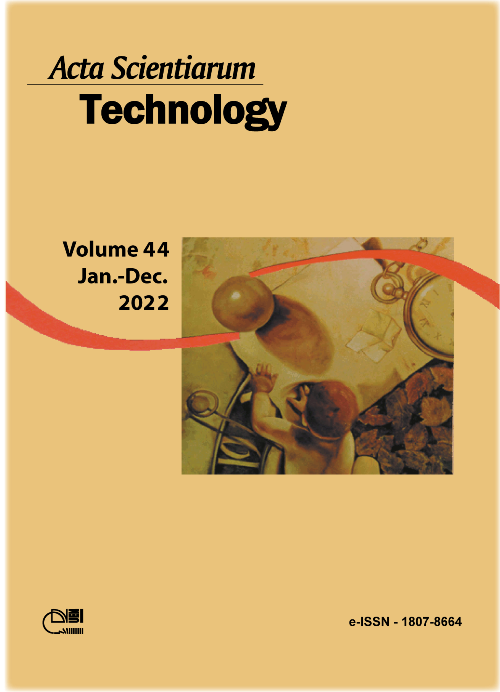Analysis of fat mass value, clinical and metabolic data and interleukin-6 in HIV-positive males using regression analyses and artificial neural network
DOI:
https://doi.org/10.4025/actascitechnol.v44i1.57634Palavras-chave:
HIV; fat mass; bivariate linear regression analyses; artificial neural network (ANN).Resumo
The purpose of this study is to analyses the relationship between fat mass and inflammation marker, interleukin-6, clinical and metabolic data in 71 human immunodeficiency virus (HIV)-positive male patients using bivariate linear regression analyses and artificial neural network. The data used consisted of measurements collected from HIV male subjects aged 26 to 69 years, with body mass index (BMI) values between 15.47 and 36.98 kg m-2 and the fat mass values between 1.00 kg and 16.70 kg. The bivariate linear regression analyses showed that weight, waist-hip ratio, BMI, triglycerides, high-density lipoprotein and HIV viral load value were significant risk factors associated with the body fat mass in male HIV patients. Furthermore, an in-depth non-linear analysis has been performed using artificial neural network (ANN) to predict fat mass by using the significant predictors as input. ANN model with four hidden neurons obtained the highest mean predictive accuracy percentage of 85.26%. The finding of this study is able to help with the evaluation of the fat mass in the male HIV patients that consequently reflects the patients metabolic-related irregularity and immune response. It is also believed that the outcome from the analysis can help future HIV-related study on the prediction of body fat mass in male HIV patients especially in settings where dual energy X-ray absorptiometry assessments, the standard measurement method for fat mass are not available or affordable
Downloads
Downloads
Publicado
Como Citar
Edição
Seção
Licença
DECLARAÇíO DE ORIGINALIDADE E DIREITOS AUTORAIS
Declaro que o presente artigo é original, não tendo sido submetido í publicação em qualquer outro periódico nacional ou internacional, quer seja em parte ou em sua totalidade.
Os direitos autorais pertencem exclusivamente aos autores. Os direitos de licenciamento utilizados pelo periódico é a licença Creative Commons Attribution 4.0 (CC BY 4.0): são permitidos o compartilhamento (cópia e distribuição do material em qualqer meio ou formato) e adaptação (remix, transformação e criação de material a partir do conteúdo assim licenciado para quaisquer fins, inclusive comerciais.
Recomenda-se a leitura desse link para maiores informações sobre o tema: fornecimento de créditos e referências de forma correta, entre outros detalhes cruciais para uso adequado do material licenciado.



















